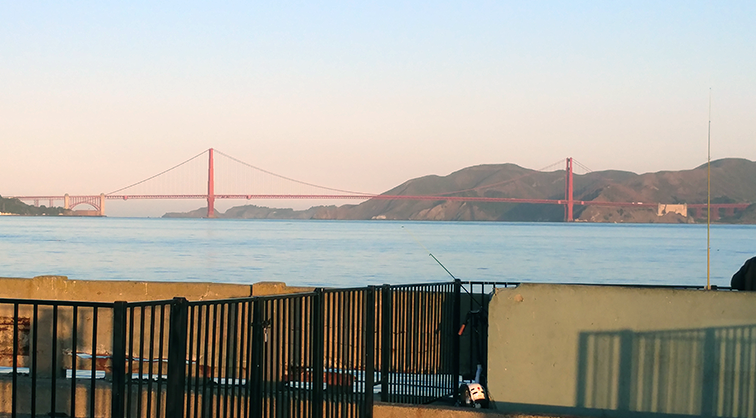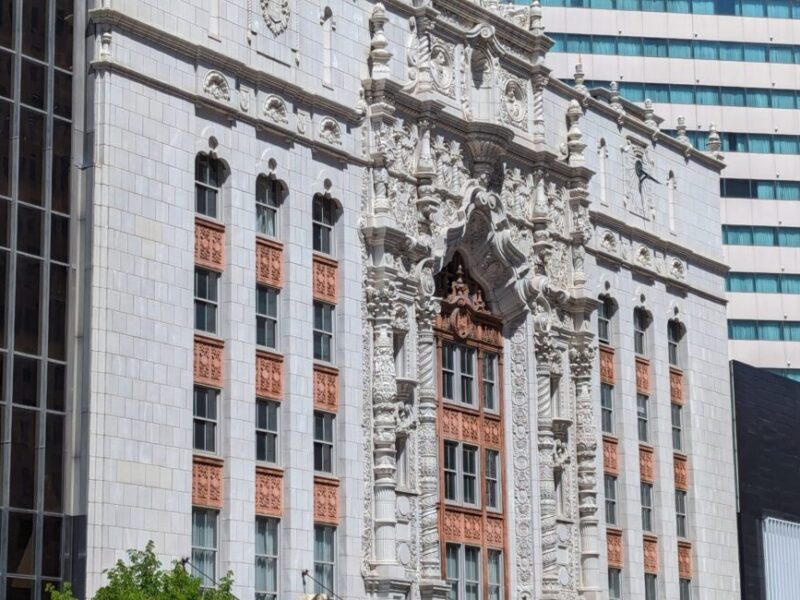Its not very often that you get a clear view of the Golden Gate Bridge from pier side, but she is something to behold when you do.
This iconic suspension bridge spans the Golden Gate Strait, the entrance to the San Francisco Bay from the Pacific Ocean. It connects the city of San Francisco to Marin County, California. The bridge, with its striking Art Deco design and vibrant orange color, is not only a vital transportation link but also a symbol of engineering prowess and American innovation.
Speaking of what an engineering marvel it is, lets take a look at what it took to make this beautiful beast happen.
Construction Challenges:
1. Geological and Environmental Conditions:
- Strong Currents and Tides: The Golden Gate Strait experiences powerful tidal currents, with speeds reaching up to 7 knots. These currents posed significant challenges during construction, especially for underwater work.
- Fog: The area is notorious for dense fog, reducing visibility and complicating construction efforts, particularly for high-altitude work and crane operations.
- High Winds: Wind speeds over the Golden Gate Strait can exceed 60 miles per hour, making it challenging to erect and stabilize the bridge’s towers and suspenders.
2. Geological Features:
- Deep Waters: The depth of the strait, which reaches around 372 feet (113 meters) at its deepest point, required innovative construction techniques for anchoring the bridge’s support towers securely.
- Rocky Seafloor: Anchoring the bridge’s massive concrete and steel structures to the rocky seafloor proved challenging and required careful planning and execution.
3. Engineering Innovations:
- Suspension Design: The Golden Gate Bridge was one of the first major suspension bridges to use a hybrid design, combining a stiffening truss with the suspension cables. This design provided the necessary stiffness and stability while minimizing material usage and construction costs.
- Safety Measures: To ensure worker safety during construction, innovative techniques such as the use of safety nets were implemented. These nets saved the lives of numerous workers who fell during construction, earning the project the nickname “The Bridge That Couldn’t Be Built” due to its low fatality rate compared to other major bridge projects of the time.
4. Financial and Political Challenges:
- Funding: Securing funding for the construction of the bridge was a significant challenge, especially during the Great Depression. The project relied on a combination of public financing, federal loans, and contributions from private investors to cover its $35 million construction cost.
- Political Opposition: The construction of the Golden Gate Bridge faced opposition from various groups, including ferry operators who feared competition, environmentalists concerned about the bridge’s impact on the surrounding landscape, and property owners who opposed the project’s potential effects on property values.
Despite these challenges, the Golden Gate Bridge was completed ahead of schedule and under budget, opening to traffic on May 27, 1937. It remains an enduring symbol of human ingenuity and serves as a vital transportation link for the San Francisco Bay Area, carrying millions of vehicles and pedestrians each year.


